Tech Support Scams Attack? No Worry!
The most prominent internet scam is the technical support scam. This involves you getting a false virus scare from them that makes you think what they say is legitimate. Do not buy their fake advice. Tech support scammers are only good at frauds. This is where Qiling Backup comes in. Have your data secured so that you do not have to worry about losing it to such scammers!
What Are Tech Support Scams?
Tech support scams begin with the scammer leading you into believing that they can assist you with authentic help regarding technical support. That too at a price lower than that available widely.
You can get calls, texts, error messages, etc. The text usually has a phone number and you will be asked to call on it. The call can lead to the scammer extracting all your balance or getting access to your phone. All these different ways are being adopted for frauds.
Emails can also be used for this very purpose. A warning or promotional email is sent for such purposes. It has a link that takes you to some website. Your personal information and data are at risk under these circumstances. In short, there are various ways a scammer can approach you. And almost all the time, it seems real enough to be trusting. A pop-up can trick you into contacting a helpline shared with you, which will be a duplicate fake one.
This does not only make you lose money but your personal information is stolen too at times. Sometimes, the scammer initiates a virus he claimed was already there. And while using it, they can hack into your system with a single click.
How to Identify and Act Against Tech Support Scams
Identifying the different tech support scams is easy when you stay vigilant. Once you learn to recognize the difference, it will save you from losing your money and all your data.
Pop-Ups
Unarguably the most common way to scam someone is a general pop-up warning on the screen. It can be disguised as a message from some legitimate source or your phone. Sometimes, it can also look like a warning for viruses or errors.
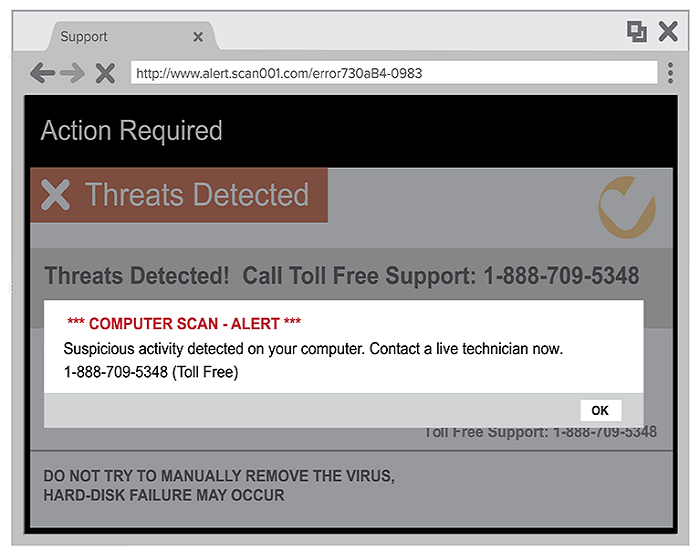
If you get this kind of pop-up window on your computer, don't call the number. A real technical support text never tells you to contact any number through a warning pop-up. It's better to avoid clicking on these pop-ups, else they can affect your system.
Calls
You can get a call from some phone number that looks like that of some company. The person will tell you they are from some famous organization. Usually, he will tell you about issues your computer is facing. Or maybe a virus that is hiding in your PC.
Cut off Scam Call: never listen to any calls that you were not expecting. The problems you are told do not exist on your computer, and the person will give you a bill for the issues discussed. Cut off instantly if you encounter something like this.
Online Ads
Always call reliable companies when you want technical support. Do not search up on the internet and browse through the results to get your issue resolved. Calling any cell phone numbers, you found somewhere on any website will lead you to a scammer. Only contact trusted companies that have a good number of reviews on social media and search engines.
Never Make the Transaction: Try not to make transactions with your bank account without verifying the service. In case you do pay a scammer like that, call the helpline to your bank immediately. Inform them about all the details and ask if they can stop the transaction made or reverse any changes made if possible.
Does Backup Protect Against Ransomware? Why Ask
Does backup protect against ransomware? A computer backup functions as a data prevention measure for disasters including ransomware and other types of malware attacks. So, yes, a backup created by a reliable backup service provider is able to protect against ransomware.
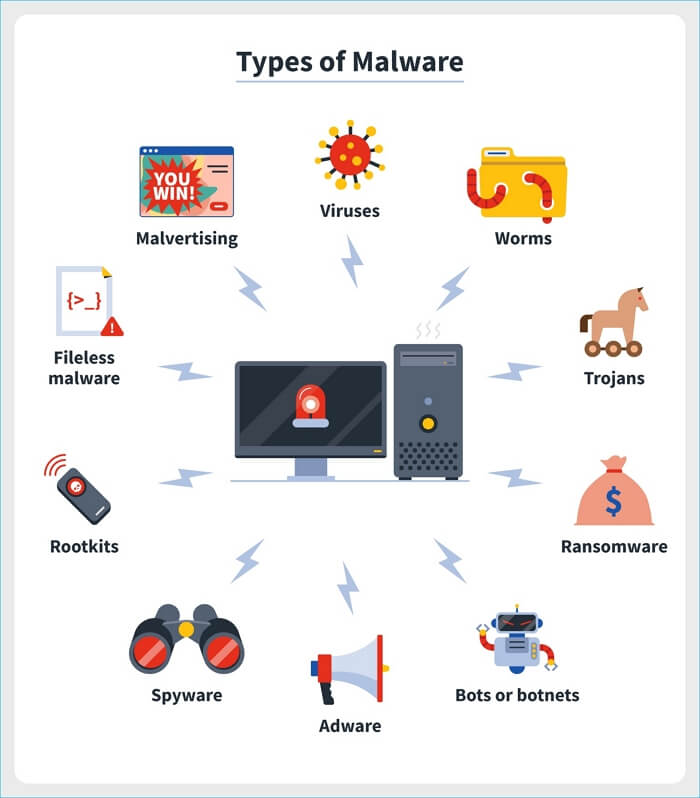
Tips To Prevent Tech Support Scams
These are some important tips you should keep in mind that will always aid you in identifying and staying alert to such scams.
1. Hyperlinks and Phone numbers
Never open links that have been forwarded from an unknown number, online ad, or spam email. Also, refrain from calling on phone numbers too that have been provided from similar sources.
2. Sharing Information
Do not share your passwords and private data with anyone. This includes your information regarding banking, usernames of social media accounts, social security number, address, and date of birth. Usually, this information has nothing to do with technical support.
3. Caller ID
Use a caller ID. This is because spoofing phone numbers is not a tough task to do. And scammers master this field of work. Also, an unexpected call should be checked because trustable sources always inform and have company phone numbers.
4. Bank Transfers
Avoid using your bank account to pay for the services. Unless you completely trust the support you are getting help from, use cash to pay. You can send some money via post and also use gift cards.
5. Suspicious Messages
Delete and Block sources of the texts that are spam. And take no time to report the email or phone number to the authorities.
See More: Use Qiling Backup to Protect Yourself
Once the computer is infected with malware or ransomware, users will not be able to access their own data. Hackers usually charge users a high ransom and sometimes even if users give money, they may not be able to recover data.
However, with Qiling Backup, you will have no such worries. The Security Zone function in Qiling Backup can help you to create an "invisible" partition on the computer where viruses cannot invade. Qiling Backup helps users to protect backups from ransomwares so as to protect the data.
Follow the below steps to start the process:
Step 1. Launch Qiling Backup on your computer, and click System Backup on the Backup and recovery page.

Step 2. Your Windows operating system information and all system related files and partitions will be automatically selected so you don't need to do any manual selection at this step. Next, you'll need to choose a location to save the system image backup by clicking the illustrated area.
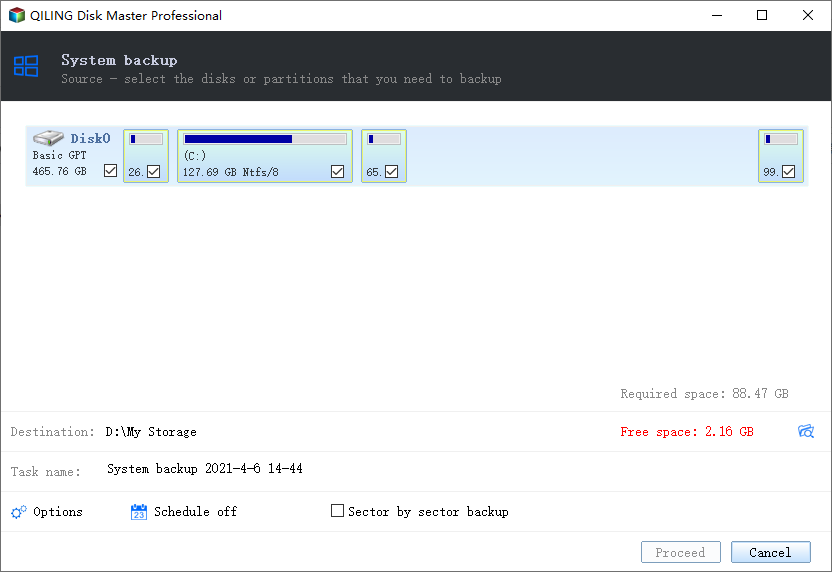
Step 3. The backup location can be another local drive on your computer, an external hard drive, network, cloud or NAS. Generally, we recommend you use an external physical drive or cloud to preserve the system backup files.
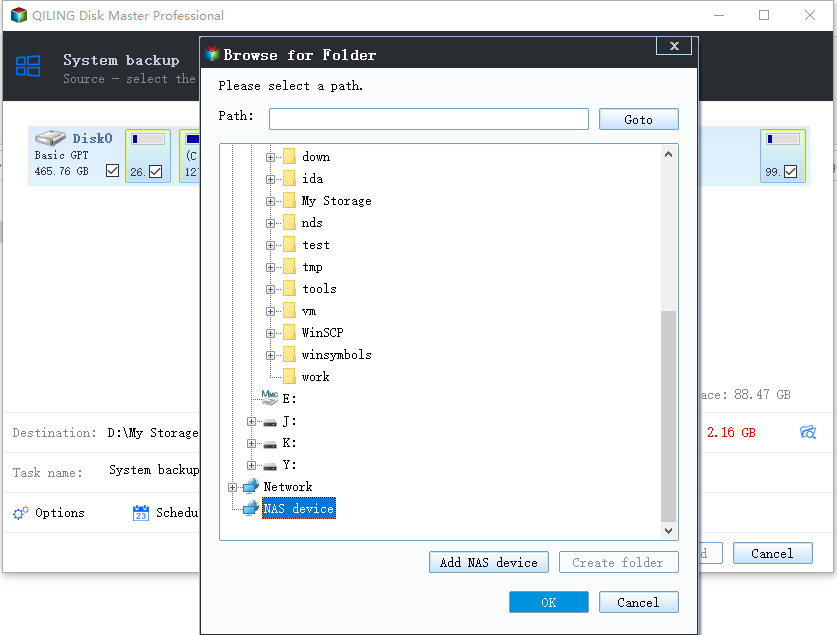
Step 4. Customiztion settings like enabling an automatic backup schedule in daily, weekly, monthly, or upon an event, and making a differential and incremental backup are available in the Options button if you're interested. Click "Proceed", and the Windows system backup process will begin. The completed backup task will display on the left side in a card style.
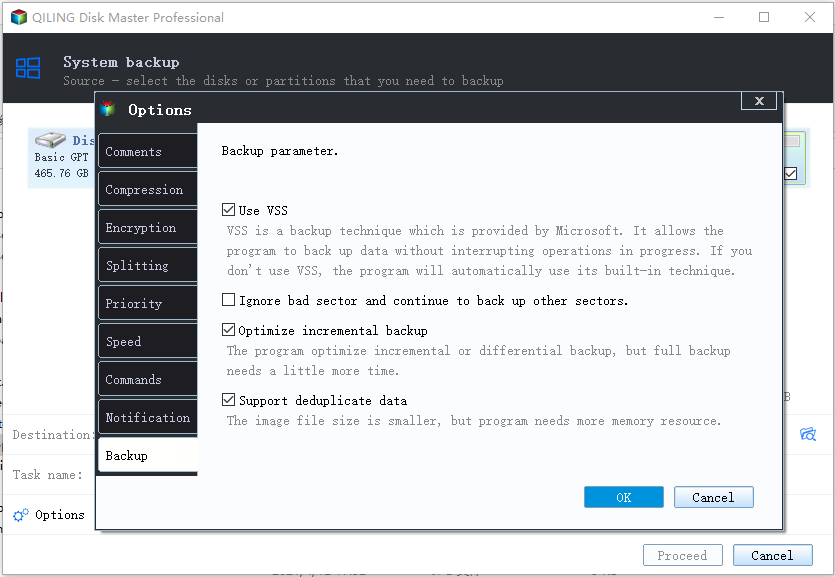
Conclusion
Now that you know all about these tech support scams, you can save yourself from getting attacked by one. Keep all the provided tips in mind at all times. Cybercrimes are increasing at an unimaginable rate. Keep an eye open for all such scammers when you are online. In order to reduce the risks of losing data, you'd better download Qiling Backup to help you! It can not only migrate OS to an external HDD/SSD but also encrypt backups.
Related Articles
- 2022: How to Installl Windows 11 on M.2 SSD (with Pictures)
- How to Backup Microsoft Office Before Reformatting Hard Drive or PC
- Which One to Choose: What is the Best Gaming Laptop?
- Everything About S Mode in Windows 11